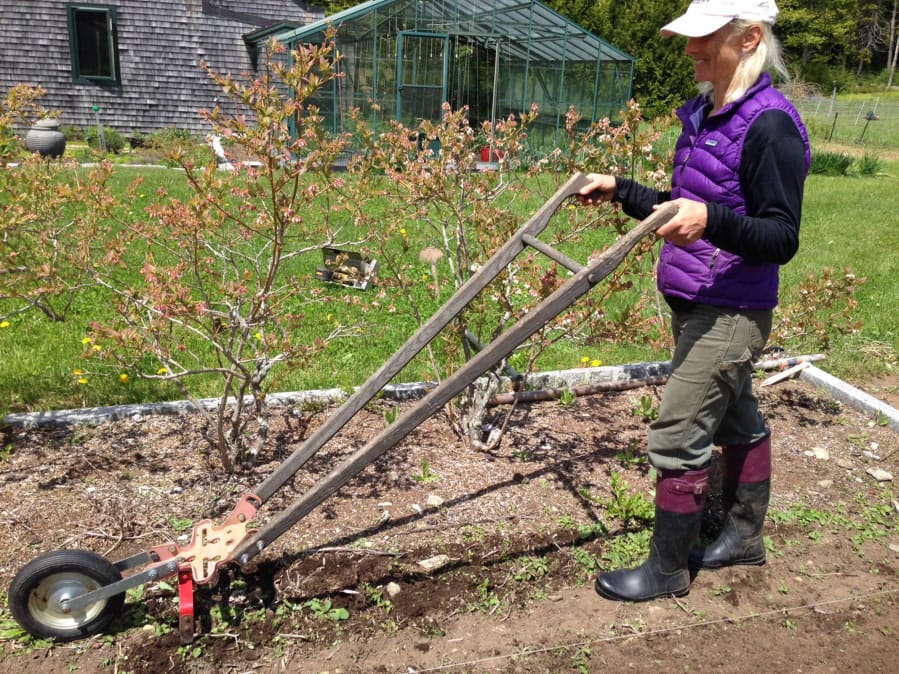It’s not often that a simple garden tool becomes a cult favorite, but such is the case for the wheel hoe. It’s easily the most time-saving, back-sparing tool in my shed, as it deals with the most taxing job: removing weeds, especially ones in compacted soil.
Picture a stirrup hoe, which is shaped like a horse rider’s stirrup iron with a sharp horizontal blade at the bottom. Instead of chopping weeds, you draw the blade through the soil, cutting off weeds below the surface. In some versions, the blade is stationary, but in the case of the oscillating hoe (or “hula hoe”), the blade is hinged to produce a waggling, back-and-forth motion, so you can both push and pull the hoe, and with more force.
A wheel hoe has a stirrup hoe mounted behind a wheel. The gardener grasps the tool’s two handles and rolls it forward with little effort. I can push mine down a weedy, well-trodden garden path at a walking pace, dislodging stubborn weeds to be raked up or allowed to shrivel in the sun. I also use it in garden beds and, in some cases, for creating a new growing area without tilling.
Until fairly recently, wheel hoes were not easy to find because few companies made or sold them. Yard sales and eBay were the primary sources. But now catalogues such as Johnny’s Selected Seeds, Hoss Tools, Valley Oak Tool and Peaceful Valley Farm Supply carry them, with most prices ranging from $200 to $400 — more if you add attachments such as plows and seeders or want Johnny’s jumbo model, with two wheels that straddle a row of plants. (Mine has repaid its price many times over in work saved. I compare it not with a $30 regular hand hoe but with the $1,500 rototiller I might have bought instead.) It’s a purchase that could be shared with neighbors, family or members of a community garden.



